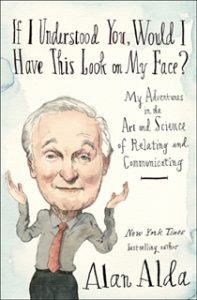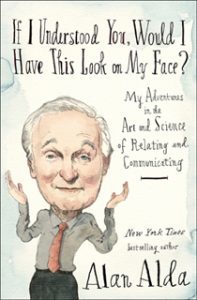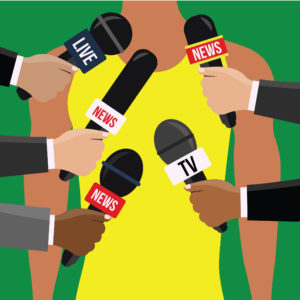
by Beth Levine | Apr 18, 2018 | preparing for a presentation, public speaking
It happens to me all the time.
 I prepare, prepare, prepare for what I’m going to say and do, whether I’m delivering a keynote or a training session. In fact, I only stop preparing when I get to the point where I’m convinced and pleased that I’ve thought of everything. Ha! While I probably have thought of everything I possibly could without being in the room, the best laid plans are just that – plans.
I prepare, prepare, prepare for what I’m going to say and do, whether I’m delivering a keynote or a training session. In fact, I only stop preparing when I get to the point where I’m convinced and pleased that I’ve thought of everything. Ha! While I probably have thought of everything I possibly could without being in the room, the best laid plans are just that – plans.
Invariably, frequently actually, I go “off script” in response to something in the room. It could be the audience (as it should be!) or it could be the room configuration, the presence or absence of a white board, or even something random about the environment. When I use PowerPoint, there might be something about the lighting or seating that prompts me to use my visuals a little differently.
Even if you aren’t neurotic about preparation like I am, you no doubt have your own best laid plans for presentations. But then there’s the room, the people, the day – there are a lot of variables and unknowns.
So what do you do when … ?
-
Your time allotment changes. This can be terribly unnerving to a presenter, especially to an apprehensive presenter who would rather not be there anyway and who definitely did not plan on doing improv or speed talking like an auctioneer.
Two suggestions here: 1) ask the event host or person who informed you about the time crunch what they would like you to cover or what about your presentation topic they feel is most relevant/valuable to the audience; and/or 2) let the audience know that, due to time, you’re delivering an abridged version of your presentation and, provided you know your main points well, deliver those with only limited supporting detail or choose your strongest main point and deliver that one in its entirety.
-
Technology fails. It may be 2018 and technology has given rise to some previously unimaginable things, like autonomous cars or cryptocurrencies, but in conference rooms and hotel ballrooms everywhere, simple technology still fails us. Projectors and laptops don’t synch, Internet connections get interrupted, video doesn’t play smoothly.
Recommendation: Don’t dwell on it. Move on. No one, and I mean not one person, in the audience wants to wait for or watch you try to fix it. You are responsible for your presentation, not your laptop. If your visuals aren’t working like you planned, skip over them. Describe them as if telling a story about the illustration you were going to show, and/or engage the audience in Q&A or dialogue sooner or more frequently during the presentation than you planned. Do your best in this situation but please avoid being so attached to the beautiful visuals you prepared that you forget about the connection between you and your audience.
-
There are far fewer/more people than you expected. I have had both of these situations, in their extremes. The “far fewer” scenario can leave you feeling crestfallen, deflated. The “far more” scenario can leave you feeling overwhelmed and daunted.
Bottom line: It’s all good. Don’t let this unexpected surprise throw you off. Each has a silver lining. A smaller than expected audience allows for more intimate interaction with your audience. A larger than expected audience is a potential opportunity to get your message out to more people. Both can be advantageous.
-
Your topic is clearly not what they were wanting or expecting. Yikes! You are speaking and you can tell you’re tanking. You keep on keeping on but you’re wondering why the heck you didn’t ask for an eject button or a hole in the floor where you could just drop down and disappear!?
I have three words of advice here: Switch. It. Up. Don’t be so driven to finish the presentation you prepared and planned that you abandon your audience. If you can tell you’re losing them or they’re not interested, ditch your presentation in favor of talking to/with your audience. Stop and ask them for questions or discussion. It will confirm whether or not they’re with you, and it will give way to a more lively and satisfying experience for all.
One caveat: If you switch it up and your audience has no questions or comments, you might need to prompt them. Ask them about their connection to the topic, their experiences, their expectations. It’s an imperfect situation for sure, but your audience is your go-to for the solution.
-
The room set-up is funky. Or the room assignment changes at the last minute. Either way, this presents a variable that’s way out of your control and possibly one of the most common. I can’t tell you how many times I’ve told a host I won’t be using a projector and it’s all set up, lights dimmed and all, when I get there. Or I ask for a large white board and it turns out they don’t have one, which I find out when I arrive. Or we’ve discussed having people sit at tables in a horseshoe shape, and the chairs are set up theater-style and there are no tables. I could go on and on.
Let’s keep this one simple. Be prepared for anything. Get there early. Size up the situation. Re-do your presentation “choreography” in your mind. Ask for what you need. And then just adapt.
Remaining adaptable is just part of the deal. There’s more out of your control than in your control when you’re presenting. So if there’s one final piece of advice I’d give, it’s this: Make “remaining adaptable” part of your mental preparation, it might well be your best laid plan.

by Beth Levine | Apr 2, 2018 | preparing for a presentation, public speaking
Are you a communicator or a broadcaster?
Are you more inclined to participate in a dialogue or engage in a competing monologue?
Are you someone who listens to learn and appreciate or who listens to find a springboard to something you wanted to say?
The two-way street of communicating has many subtle nuances that – if I’m honest about this – are not sufficiently addressed in communication or presentation skills trainings. This is perhaps due to the many nuances or to their subtleties, which are highly individualized, depending on variations in people and situations, and therefore impossible to fully anticipate.
Nonetheless, in communication and presentation skills trainings, we tend to be more consumed with the command and impressiveness of the speaker than we are with the speaker’s ability to relate – to listen, appreciate, empathize and respond appropriately. We are focused on the performance side – the broadcasting, the competing monologue – more than the relating side. And when I say “we,” I’m talking about both trainer/coach and speaker. We both could do better.
 In Alan Alda’s book If I Understood You, Would I Have This Look on My Face?, he writes: “There’s a body of scientific literature on responsive listening, but I came to understand it in a personal way through my work. In acting, this kind of relating is fundamental. You don’t say your next line simply because it’s in the script. You say it because the other person has behaved in a way that makes you say it. Relating to them allows them to have an effect on you – to change you, in a way. And that’s why you respond the way you do.
In Alan Alda’s book If I Understood You, Would I Have This Look on My Face?, he writes: “There’s a body of scientific literature on responsive listening, but I came to understand it in a personal way through my work. In acting, this kind of relating is fundamental. You don’t say your next line simply because it’s in the script. You say it because the other person has behaved in a way that makes you say it. Relating to them allows them to have an effect on you – to change you, in a way. And that’s why you respond the way you do.
You don’t say your next line simply because it’s in the script. Wow. If you’re relating, then you need to remain open to ditching your proverbial script and to being affected, influenced even, by the other person’s words or point of view. This requires no anticipation and preparation; it merely requires being present, yielding, and genuinely leaning in and listening.
When I talk about “audience-centricity” in my trainings, it falls a little short of Alda’s responsive listening. I encourage speakers to prepare for meetings and presentations in a way that puts the audience’s needs, interests and experience ahead of their own. So yes, yielding to the audience and putting them first is important. It’s a start.
Then there’s also what I call “dynamic listening” – paying attention to your audience with all five senses. Watching, listening, sensing whether they’re with you, understanding you, energized or not. This is yet another step. But both of these – audience-centricity and dynamic listening – overlook the actual response side of the two-way street.
Relating, as Alda suggests, takes it to the finish line. It requires, as improv comedy does, that you open yourself to the words and reactions of others so that then, and only then, can you respond in a meaningful, relevant, relatable way.
The script is necessary; there’s no question you should always be prepared. But your next line, your response to a client or stakeholder, does not necessarily have to come from the script. It can come from the place of empathy and appreciation that you keep open in your eyes, ears, mind and heart.

by Beth Levine | Mar 20, 2018 | preparing for a presentation, public speaking
I often wax on about audiences and audience-centricity: that you need to put your audience’s needs and interests ahead of your own, that it’s all about them, that they need tons of “guidance” in order to be able follow your presentation and get the point. All true. Perhaps never truer, as audiences have hand-held alternatives for their fickle feed-me-now attention spans.
 Guidance has always been a big one for me. Tell your audiences where you’re taking them, what you expect of them or want them to have at the end, when you’re digressing for a story, when you’re on main point #1, #2 or #3, and when you’re concluding. Don’t be afraid to speak your presentation structure out loud, so when an audience member’s attention drifts away, they’ll be able to track where you are when they bring their attention back to you.
Guidance has always been a big one for me. Tell your audiences where you’re taking them, what you expect of them or want them to have at the end, when you’re digressing for a story, when you’re on main point #1, #2 or #3, and when you’re concluding. Don’t be afraid to speak your presentation structure out loud, so when an audience member’s attention drifts away, they’ll be able to track where you are when they bring their attention back to you.
Two weeks ago, I was lucky enough to attend an executive speechwriting conference in Washington, D.C. Given the location, a lot of the speakers were from government and politics, but corporate America, higher education and healthcare were also nicely represented. There was a great cross-section of perspectives, experiences and standards shared by speakers and attendees alike. Friends and colleagues who knew I was going to the conference asked if I was speaking or attending. When I replied that I was attending and really excited to go and learn, I got some raised eyebrows.
Well, learn I did! I’ll admit it was gratifying when many of my methods and principles were validated by what I heard. But I’ll also readily admit that I took copious notes and brought back all kinds of new ideas.
Among those was “verbal wayfinding.” Verbal wayfinding is the more sophisticated term for guidance and is, in my view, a more well-developed concept. The other terms used interchangeably with verbal wayfinding were “breadcrumbs” and “signposts” – more than guidance, these refer to weaving into a speech or presentation thematic reminders and reinforcements as well as the structural ones that my word guidance encourages.
The bottom line is this: Your audiences have not seen your notes or read your script, nor have they rehearsed with you. They are fresh-earred, first-time listeners, and they will only hear it that one time. You and your material have shared countless moments together, but your audiences will share only one moment. It’s your job to make that moment count, make the material stick. Drop breadcrumbs throughout, put up signposts, script in verbal wayfinding, because it’s all about them, your audience, and they need guidance!

by Beth Levine | Mar 5, 2018 | public speaking
 All too often, in preparation for a speech or presentation, we focus on words and content, believing very sincerely in their importance. And I must confess, I am quite possibly more guilty of this than most.
All too often, in preparation for a speech or presentation, we focus on words and content, believing very sincerely in their importance. And I must confess, I am quite possibly more guilty of this than most.
So, in an effort to self-correct – and provide readers with valuable, necessary insights – I want to share some interesting facts about the importance of non-verbal communication:
-
Human communication is approximately 20% verbal and 80% non-verbal. This means if you’re saying something but your body language says the opposite, you’re not likely to get your message across. The focus on words and content is therefore lost.
-
According to researchers, our bodies express emotion better than our faces. Body language matters. It speaks volumes about us to others.
-
The average person actually only speaks words for a total of 10-11 minutes a day. And the average sentence takes 2.5 seconds to say. This, of course, is not the case for someone delivering a speech or presentation but is interesting to note in terms of other everyday communications.
-
We make and recognize about 25,000 facial expressions a day. Wow, that’s a lot of subtle, subconscious two-way communication.
-
Pointing is one of the most offensive gestures – and this is true pretty much around the globe.
-
Hand-steepling is one of the most high-confidence hand gestures. In general, hand and body gestures that move in an upward or out (toward your audience) direction register as positive.
-
Power poses – e.g. standing up, sitting with arms spread out on the on the chairs around you, “Wonder Woman” stance (feet planted; hands on hips) – make speakers feel more powerful as they actually change testosterone and cortisol levels in the body.
These are important insights to keep in mind, but you still need to be authentically you when you’re speaking in front of a group. We all have our own personal styles and preferences. Mine include moving around the room (as long as I don’t have a fixed podium mic), lots of eye contact, and gesturing out toward the audience. I smile a lot in one-on-one personal conversation, but I find that I have to make an effort to remember to smile when I speak publicly (go figure!).
Think about what your style and preferences are, and then identify one or two body language elements you might need or want to add. Try them, and good luck out there!

by Beth Levine | Feb 20, 2018 | preparing for a presentation, public speaking
“I want to go over to the judges and say, ‘Can I just have a Xanax and a quick drink?’” – Adam Rippon, U.S. Olympic Figure Skater.

What do you think of these quotes? Funny? Edgy? Whiny? Inappropriate? Authentic?
Are they simply sharing, self-revealing and being incredibly transparent?
Don’t get me wrong here. I, too, ADORE and IDOLIZE these two athletes. They both were amazing to watch, delivered incredible athletic performances and charmed the pants off of me and the rest of America in their interviews.
 However, I’m also a little old school about the Olympic Games and Olympic Athletes. While I encourage transparency and authenticity among my athlete and executive coachees, I believe the Olympics – more than any other sporting competition – call for a special kind of decorum. Athletes on the U.S. Olympic Team are not competing for a privately owned franchise, like an NBA or NFL team. These athletes are competing for the red, white and blue of the United States of America. The “brand” they represent is a complex mix of themselves, their sport/team and their country (not to mention, their sponsors, coaches and families). It’s a high bar to represent all of those entities well, but that’s what the Olympic Games demand.
However, I’m also a little old school about the Olympic Games and Olympic Athletes. While I encourage transparency and authenticity among my athlete and executive coachees, I believe the Olympics – more than any other sporting competition – call for a special kind of decorum. Athletes on the U.S. Olympic Team are not competing for a privately owned franchise, like an NBA or NFL team. These athletes are competing for the red, white and blue of the United States of America. The “brand” they represent is a complex mix of themselves, their sport/team and their country (not to mention, their sponsors, coaches and families). It’s a high bar to represent all of those entities well, but that’s what the Olympic Games demand.
For our part, the hero-worship is real and while we do want to know (and I do want them to share) what’s going on in their heads, especially prior to competition, I would prefer a little more careful selection in the words they choose. Little kids are watching, listening, modeling.
Having said that, I do recognize that both of these athletes meant to be self-effacing in these quotes versus the much-less-tolerable self-aggrandizing, and I applaud them for that. It’s also noteworthy that both of these quotes got a lot of positive attention. And in an almost immediate endorsement of his widespread appeal, Adam Rippon was offered a commentator position by NBC for the duration of the Games as soon as he finished competing. So there’s that too.
Perhaps I need to make an adjustment to my old-school thinking? Is there such a thing as “proper jock talk” for the Games? Let me know your opinion, I’m eager to hear what others think. I have until Summer of 2020 in Tokyo to change my outlook if necessary!
#jocktalkbook

by Beth Levine | Feb 6, 2018 | preparing for a presentation, public speaking
To Team USA:
 Congratulations! You have achieved your dream, you are in PyeongChang now, and the Opening Ceremony is in two days. You are among the very best in your sport and you are so ready for the Olympic Games to begin.
Congratulations! You have achieved your dream, you are in PyeongChang now, and the Opening Ceremony is in two days. You are among the very best in your sport and you are so ready for the Olympic Games to begin.
But … are you ready for the Image Games?
Here are 5 points to remind you – and anyone who cares about their brand and reputation – how to view and play the media game:
1. Reporters have a job to do. They need to tell a story and include quotes to support the story. Without quotes, it would be an opinion piece. Sure, they get it wrong or twist things sometimes (usually unintentional) but, like you do with competition, stay focused and do your best to influence the outcome.
2. Play offense, not defense. Have an offensive strategy. Know how you like to talk about yourself, your sport, the competition, winning/placing/losing. Don’t play defense and simply wait for the questions to come at you only to have to think and respond on the fly. In other words, be prepared for what you know are the “usual suspect” questions.
3. Be gracious. About everything and everyone. At all times. Take the high road. Anything less sounds like sour grapes, sore winning/losing, or just plain ungrateful. Even if there’s a competitor that you and everyone else would like to pounce on, resist. On a world stage, in the spirit of sport and peace, give everyone the benefit of the doubt and stick to what you know best – yourself and your own performance. In the end, throwing shade on others casts more doubt on you than it does on them.
4. Be transparent. Be real. You are likely to be extremely real on social media, so be consistent when you talk to the traditional print and broadcast media. It’s okay to be vulnerable, emotional, frustrated or upset. Just own it and be gracious about it. Even crying is okay, everyone can empathize. The more real you are, the more accessible you are; the more accessible you are, the more your appealing you and your image are.
5. Maintain perspective. Everyone, spectators and reporters alike, would give anything to be in your shoes (or skis, skates, luge, bobsled) even for only 2 minutes. You, during these 16 days, are the darlings and envy of your country and the world. Reporters, because they get to be so close to you and the “field of play” for these 16 days, are especially prone to fandom. They’re there to be an insider as much as anything else, so keep that in mind. The only people looking to take you down are your competitors. Everyone else is pulling for you, even the media.
It’s hard enough to do a good job – in your case, deliver a world-class performance and make your families and country proud – when you compete. But then, moments later, when you’re confronted with a microphone and camera, the job continues. Hopefully these 5 points will help you wrap your head around delivering a medal-winning performance in the Image Games too. Go Team USA, we’re rooting for you!

 I prepare, prepare, prepare for what I’m going to say and do, whether I’m delivering a keynote or a training session. In fact, I only stop preparing when I get to the point where I’m convinced and pleased that I’ve thought of everything. Ha! While I probably have thought of everything I possibly could without being in the room, the best laid plans are just that – plans.
I prepare, prepare, prepare for what I’m going to say and do, whether I’m delivering a keynote or a training session. In fact, I only stop preparing when I get to the point where I’m convinced and pleased that I’ve thought of everything. Ha! While I probably have thought of everything I possibly could without being in the room, the best laid plans are just that – plans.



 Guidance has always been a big one for me. Tell your audiences where you’re taking them, what you expect of them or want them to have at the end, when you’re digressing for a story, when you’re on main point #1, #2 or #3, and when you’re concluding. Don’t be afraid to speak your presentation structure out loud, so when an audience member’s attention drifts away, they’ll be able to track where you are when they bring their attention back to you.
Guidance has always been a big one for me. Tell your audiences where you’re taking them, what you expect of them or want them to have at the end, when you’re digressing for a story, when you’re on main point #1, #2 or #3, and when you’re concluding. Don’t be afraid to speak your presentation structure out loud, so when an audience member’s attention drifts away, they’ll be able to track where you are when they bring their attention back to you.
 All too often, in preparation for a speech or presentation, we focus on words and content, believing very sincerely in their importance. And I must confess, I am quite possibly more guilty of this than most.
All too often, in preparation for a speech or presentation, we focus on words and content, believing very sincerely in their importance. And I must confess, I am quite possibly more guilty of this than most.

 However, I’m also a little old school about the Olympic Games and Olympic Athletes. While I encourage transparency and authenticity among my athlete and executive coachees, I believe the Olympics – more than any other sporting competition – call for a special kind of decorum. Athletes on the U.S. Olympic Team are not competing for a privately owned franchise, like an NBA or NFL team. These athletes are competing for the red, white and blue of the United States of America. The “brand” they represent is a complex mix of themselves, their sport/team and their country (not to mention, their sponsors, coaches and families). It’s a high bar to represent all of those entities well, but that’s what the Olympic Games demand.
However, I’m also a little old school about the Olympic Games and Olympic Athletes. While I encourage transparency and authenticity among my athlete and executive coachees, I believe the Olympics – more than any other sporting competition – call for a special kind of decorum. Athletes on the U.S. Olympic Team are not competing for a privately owned franchise, like an NBA or NFL team. These athletes are competing for the red, white and blue of the United States of America. The “brand” they represent is a complex mix of themselves, their sport/team and their country (not to mention, their sponsors, coaches and families). It’s a high bar to represent all of those entities well, but that’s what the Olympic Games demand.
 Congratulations! You have achieved your dream, you are in PyeongChang now, and the Opening Ceremony is in two days. You are among the very best in your sport and you are so ready for the Olympic Games to begin.
Congratulations! You have achieved your dream, you are in PyeongChang now, and the Opening Ceremony is in two days. You are among the very best in your sport and you are so ready for the Olympic Games to begin.

